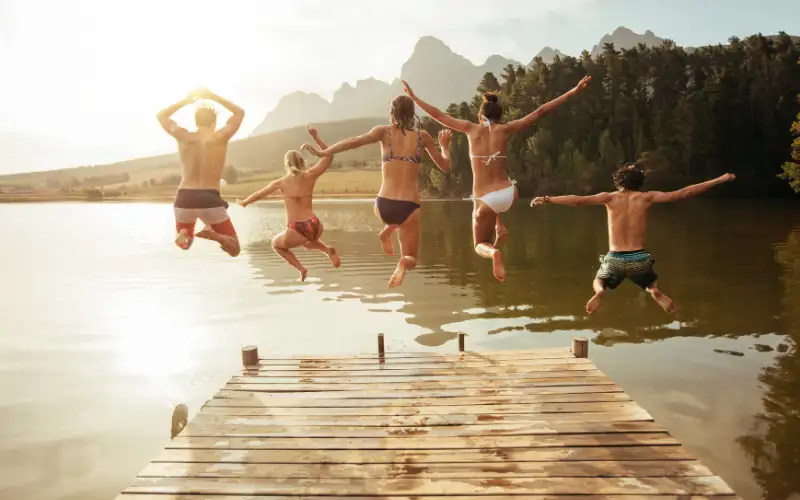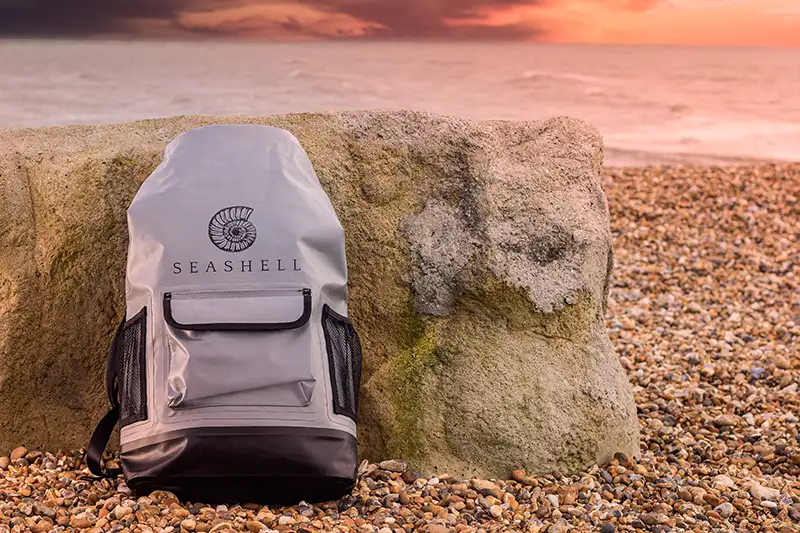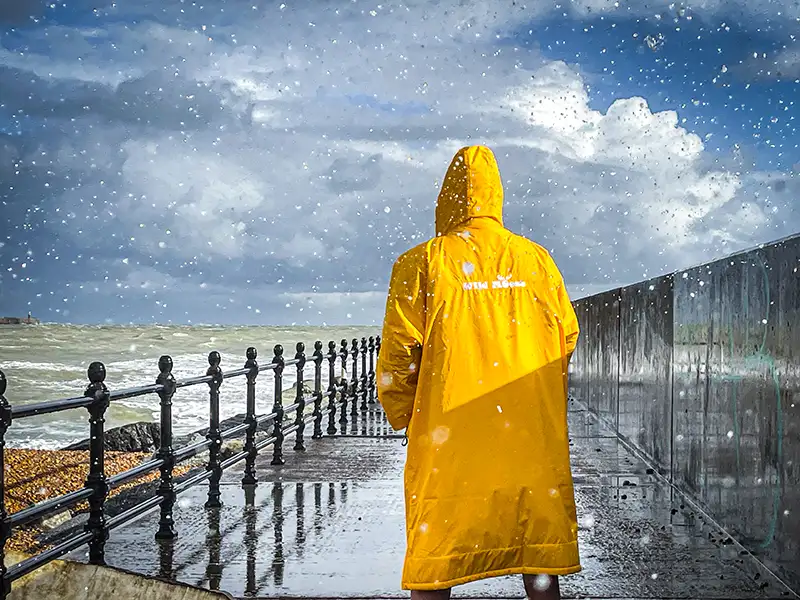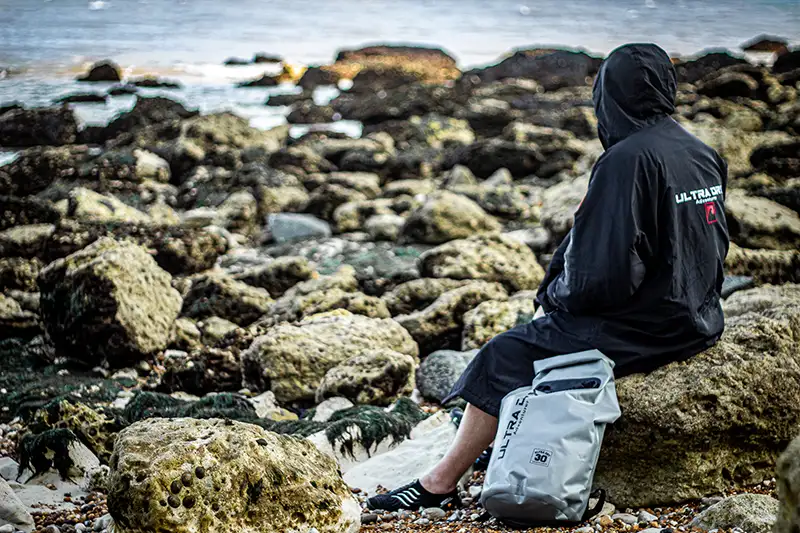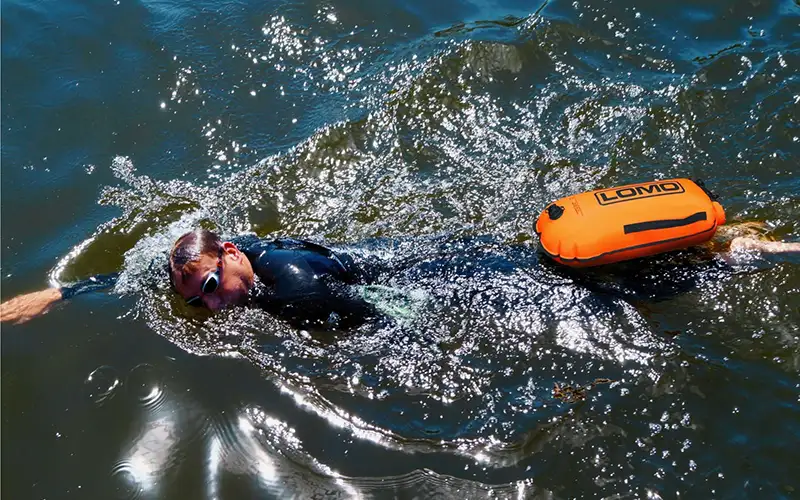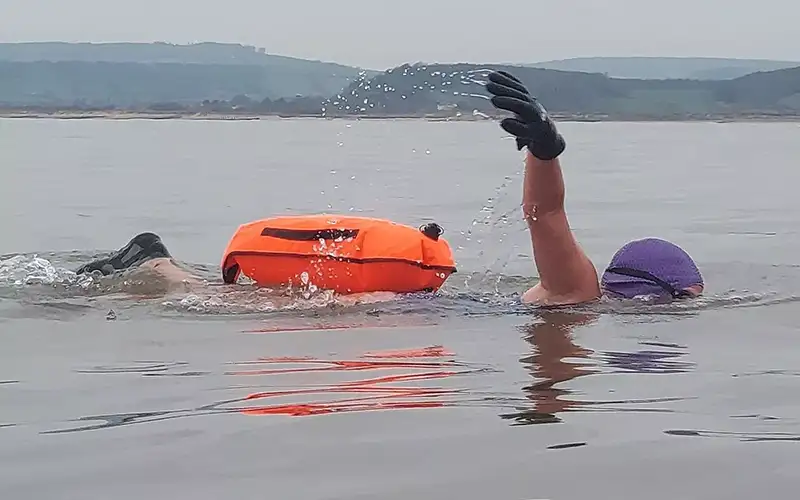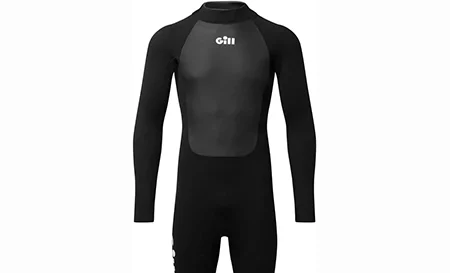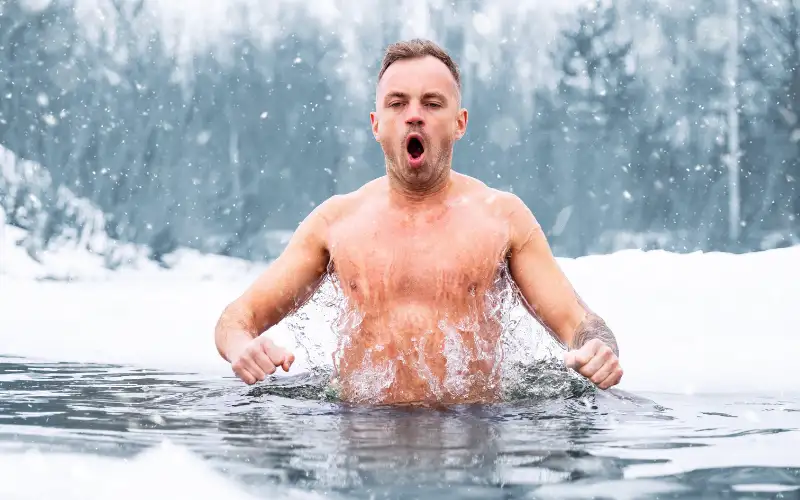Imagine immersing yourself in the cool, crystalline waters of a hidden river, surrounded by lush greenery and the gentle sounds of nature. This is wild swimming; an exhilarating and immersive experience that connects you with the very essence of the outdoors. As the modern world races ahead with its digital screens and concrete jungles, the allure of wild swimming has grown stronger, drawing in a growing community of enthusiasts.
Wild swimming isn’t just a trend; it’s a journey into the heart of nature, a dance with the elements, and a plunge into the sublime. It’s about shedding the confines of man-made pools and embracing the untamed beauty of open waters.
In this article, we’ll embark on a journey through the enchanting world of wild swimming. Whether you’re a seasoned swimmer or dipping your toes into this exciting realm for the first time, there’s something in these waters for everyone.
My aim is simple: to provide you with a comprehensive guide to wild swimming throughout the seasons. I’ll explore the best locations, the myriad benefits, and the essential preparations needed for a safe and enjoyable experience.
Whether it’s tranquil springs, sun-drenched summers, golden autumns or frosty winters, we’ll embrace the essence of wild swimming and discover the profound connection it offers with the great outdoors. Welcome to the world of wild swimming – where every season brings a fresh opportunity to become one with nature’s watery wonders.
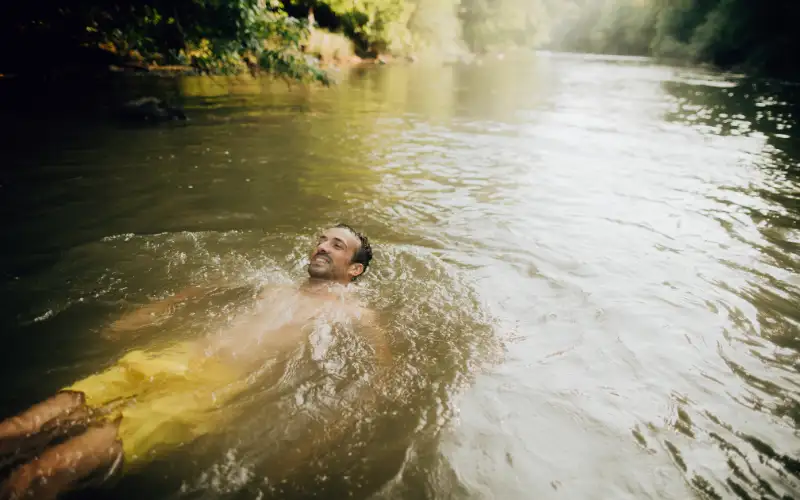
What is Wild Swimming?
Wild swimming, often referred to as “open water swimming,” is the exhilarating practice of swimming in natural waters, which can include pristine rivers, serene lakes, and vast seas. Unlike the structured confines of chlorinated swimming pools, wild swimming immerses you in the unspoiled beauty of nature’s wonder.
At its core, wild swimming is about more than just the physical act of swimming; it’s a profound connection with the environment. As you glide through waters untouched by artificial chemicals, you become one with the natural world. The gentle sway of aquatic plants, the chorus of singing birds, and the soothing lapping of waves on the shore become your companions in an immersive journey.
One of the most alluring aspects of wild swimming is the sense of adventure it offers. In a world where mapped-out paths and controlled environments dominate, wild swimming invites you to explore uncharted territories. Dive into hidden coves, traverse meandering river bends, or simply float under the open sky – every swim is an expedition into the unknown.
While wild swimming embraces the beauty of nature, it also accommodates variations like open water swimming and cold water swimming. Open water swimming extends the boundaries of wild swimming, offering the chance to swim in vast expanses like seas and large lakes. Cold water swimming, on the other hand, takes the challenge a step further by immersing you in frigid waters, often as part of a wild swimming adventure.
In the sections that follow, we’ll embark on a journey through the seasons, exploring the best locations and the myriad benefits of wild swimming.
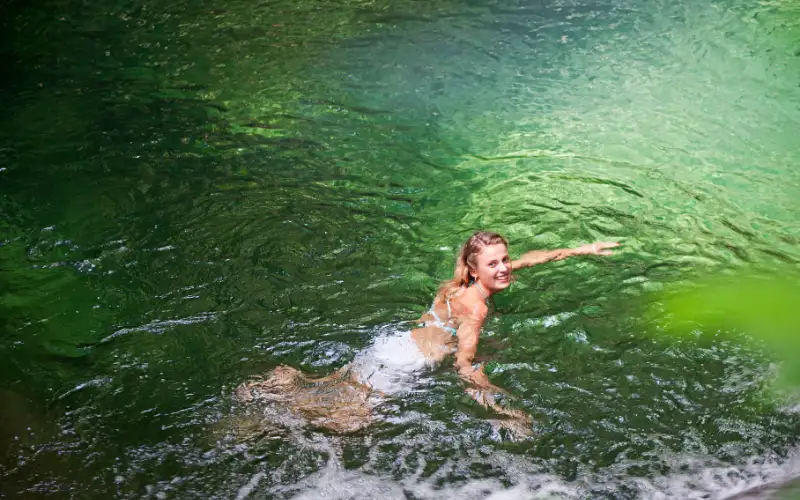
Benefits of Wild Swimming
Wild swimming isn’t merely an invigorating outdoor activity; it’s a gateway to a multitude of physical, mental, and emotional benefits that can transform your well-being. As you embrace the natural world of rivers, lakes, and seas, you’ll discover a host of advantages that extend far beyond the waters themselves.
Physical Benefits
- Enhanced Circulation: The sensation of cool water against your skin stimulates circulation, invigorating your body and improving blood flow. Regular wild swimming can contribute to better cardiovascular health.
- Boosted Immune System: Immersing yourself in natural waters exposes your body to beneficial microorganisms, potentially strengthening your immune system over time. Cold water, in particular, is believed to stimulate the production of white blood cells, bolstering your defenses.
Mental and Emotional Benefits
- Reduced Stress: The tranquillity of wild swimming spots, far from the hustle and bustle of urban life, provides a serene backdrop for stress relief. The rhythmic act of swimming and the peaceful surroundings can calm your mind and reduce stress levels.
- Mental Clarity: The solitude of wild swimming allows you to disconnect from daily distractions and find mental clarity. The gentle rocking of the water and the sound of nature create a meditative environment that can enhance focus and creativity.
Liberation and Connection with Nature
Perhaps one of the most enchanting aspects of wild swimming is the sense of liberation it offers. As you submerge yourself in natural waters, you shed the constraints of walls and lanes. Each stroke becomes a dance with the currents, and every breath is filled with the scent of the outdoors.
The connection with the natural environment is palpable. You’ll share your swimming space with the resident wildlife, from curious fish to graceful waterfowl. The changing seasons paint a different portrait with each visit, creating a deep appreciation for the world around you.
A Year-Round Wild Swimming Journey
Wild Swimming In Spring
As the grip of winter loosens, spring beckons wild swimmers with the promise of warmer waters and vibrant landscapes coming to life. Springtime wild swimming offers a unique blend of rejuvenation and adventure. Here, we’ll explore the allure of spring swims and share some ideal locations for your aquatic escapades.
The Allure of Spring Swimming
Spring heralds the awakening of nature, and wild swimming allows you to be a part of this renewal. The air may still carry a slight chill, but the waters begin their gradual warming, making it an ideal season for beginners looking to take their first dip into wild swimming. The transition from winter to spring creates a magical atmosphere, with blossoming trees, budding flowers, and the sweet fragrance of nature in the air.
Recommended Locations
For those eager to embrace the enchantment of springtime wild swimming, I recommend locations like the Wye Valley in Wales and the Lake District in England. The Wye Valley offers tranquil river swims surrounded by lush greenery, where you can witness the awakening of the forests and the wildlife that inhabits them. The Lake District, with its picturesque lakes, provides a variety of swimming opportunities, each with its unique charm.
Open Water and Cold Water Swimming in Spring
During spring, it’s not just wild swimming that comes to life – open water and cold water swimming also become enticing options. Consider extending your adventures to larger bodies of water such as Windermere in the Lake District. Here, you can experience the thrill of open water swimming as the waters gradually warm, providing a comfortable transition for those new to open water swims.
For those seeking a more exhilarating experience, try a refreshing dip in freshwater lochs like Loch Ness in Scotland. The brisk waters offer an introduction to cold water swimming, awakening your senses and invigorating your body.
Safety Considerations
While spring brings milder temperatures, it’s essential to remain cautious. Ensure you’re adequately prepared for your springtime swims. Water temperatures can still be quite chilly, so consider wearing a wetsuit or a neoprene swim cap for added insulation. Always let someone know your plans and swim with a buddy if possible.
Stay aware of your surroundings, as spring rains can lead to stronger currents in rivers. Be mindful of changing weather conditions, as chilly winds can lower your body temperature quickly after your swim. With the right precautions in place, spring wild swimming can be a captivating and refreshing experience, setting the stage for a year-round journey into the world of open water, cold water, and wild swimming.
Wild Swimming In Summer
Summer wild swimming ushers in a season of joy, where the sun-kissed waters of coastal spots and hidden rock pools become your playground. As temperatures rise, the pull of adventure in the water grows stronger. In this section, we’ll dive into the delights of summer wild swimming and provide practical advice for safe and enjoyable swims.
The Joys of Summer Swimming
Summer wild swimming offers a kaleidoscope of delights. Coastal locations like Pembrokeshire in Wales and the rugged shores of Cornwall beckon with their sandy beaches and inviting waters. Rock pools, teeming with marine life, become natural swimming pools for explorers of all ages.
The defining feature of summer swims is the gentle embrace of warmer waters. It’s a season that welcomes swimmers of all levels, from beginners dipping their toes into wild swimming for the first time to seasoned enthusiasts seeking new coastal challenges.
Recommended Locations
Pembrokeshire’s coastline is a paradise for wild swimmers, with its sheltered coves and pristine beaches. Explore the crystal-clear waters of Barafundle Bay or dip into the Blue Lagoon near Abereiddy for a refreshing experience.
Cornwall offers diverse options, from the vibrant St. Ives Harbour to the tranquil waters of Kynance Cove. The Lizard Peninsula’s rock pools provide excellent opportunities for family-friendly swims.
Open Water and Cold Water Swimming in Summer
During the balmy summer months, open water swimming takes center stage. Coastal locations offer expansive open water opportunities, such as swimming along the stunning Jurassic Coast or the shores of the English Channel.
If you’re up for a chilly thrill, consider integrating cold water swimming by exploring freshwater lakes like Windermere in the Lake District. The contrasting temperatures create a unique sensation and provide an excellent chance to experiment with different swimming styles.
Safety Considerations
Summer wild swimming comes with its own set of safety considerations. While the waters are warmer, it’s essential to stay hydrated and wear sun protection, especially if you’re spending extended periods in the sun. Always swim within your ability and be aware of tide times and currents, particularly in coastal locations.
During open water swims, consider using brightly coloured swim caps or tow floats to increase visibility to boaters. For cold water swims, ensure you acclimate to the water temperature gradually to avoid shock.
With preparation, summer wild swimming promises days filled with sunshine, joy, and the embrace of nature’s pristine waters.
Wild Swimming In Autumn
Autumn paints the wild swimming canvas with the rich hues of red, orange, and gold, as nature’s palette transforms. It’s a season of quiet beauty, where locations like Loch Lomond in Scotland and the River Tavy in Devon take on an enchanting charm. In this section, we’ll delve into the allure of autumnal wild swimming and provide practical insights for an autumn dip.
The Beauty of Autumn Swims
As summer gives way to autumn, the wild swimming experience undergoes a gentle metamorphosis. The crispness in the air is matched by the subtle cooling of the waters. Loch Lomond, with its pristine shores and stunning reflections of autumn foliage, offers a visual feast for swimmers seeking natural splendour. Meanwhile, the River Tavy, meandering through Dartmoor National Park, invites you to explore its tranquil bends and vibrant woodlands.
One of autumn’s unique charms lies in the gradual transition from warmer to cooler waters. The sensation of cool waters against your skin becomes invigorating rather than shocking, creating a serene and introspective experience.
Recommended Locations
Loch Lomond’s expansive beauty and accessibility make it a prime location for autumnal swims. Seek out tranquil spots along the eastern shore for peaceful, reflective swims amid the changing leaves.
The River Tavy, on the other hand, offers secluded swims in the heart of Dartmoor’s wilderness. Explore the pools and cascades as you immerse yourself in the rugged beauty of this southwestern gem.
Open Water and Cold Water Swimming in Autumn
In autumn, open water swimming retains its appeal as you can still enjoy the expansiveness of larger bodies of water. Consider swimming across Loch Ness in Scotland or taking on the serene challenge of Lake Coniston in the Lake District.
For those drawn to cold water thrills, explore freshwater tarns in the Lake District or venture to alpine lakes like Llyn Tegid in Wales. The cooler temperatures during autumn offer a smooth transition into colder waters.
Safety Considerations
Autumn wild swimming requires an understanding of changing weather patterns. Be prepared for varying temperatures, especially in open water. Wear suitable attire to stay warm and visible, and keep a close eye on weather forecasts, as autumn storms can arrive unexpectedly.
When venturing into colder waters, ensure you have adequate insulation, such as neoprene gloves and booties. Always swim within your abilities and take precautions to keep warm after your swim, as autumnal winds can be chilly.
With the right preparations and a reverence for nature’s autumnal beauty, wild swimming in this season becomes a beautiful experience.
Wild Swimming In Winter
Winter wild swimming beckons the brave-hearted to embrace the challenge and unearth the hidden beauty of icy waters. The Cairngorms in Scotland, with their starkly captivating landscapes, offer a dramatic backdrop for winter dips. In this section, we’ll delve into the allure of winter wild swimming and provide essential guidance for those venturing into the frosty embrace of nature.
The Challenge and Beauty of Winter Swims
Winter wild swimming presents a unique blend of beauty and adventure. The Cairngorms, shrouded in snow and crowned by majestic peaks, provide a breathtaking setting for winter swims. Crystalline lochs and icy rivers create an otherworldly ambiance that is both serene and exhilarating.
The central allure of winter wild swimming is undoubtedly the icy waters. The initial shock gives way to a thrilling rush as you become one with the chill. Experienced swimmers revel in the intense sensations and the sense of accomplishment that comes from conquering the cold.
Recommended Locations
In the Cairngorms, consider exploring Loch Morlich, where snow-draped pines reflect on the pristine waters, or the icy embrace of Loch an Eilein, surrounded by ancient ruins and enchanting forests.
Open Water and Cold Water Swimming in Winter
Open water swimming in winter requires advanced skills and a profound understanding of safety. Those seeking the thrill of open water swims might consider taking on the challenging conditions of the English Channel. However, this endeavour is reserved for the most experienced swimmers, with comprehensive training and support.
Cold water swimming enthusiasts can explore remote tarns in the Cairngorms or venture to alpine lakes in the Scottish Highlands. Here, the chill of the water is exhilarating and a challenge to endure.
Safety Considerations
Winter wild swimming is not for the faint-hearted and should only be undertaken by experienced swimmers. It’s crucial to have robust cold-water acclimatisation, which involves gradually exposing yourself to colder waters over time.
Safety is paramount during winter swims. Wear high-quality, insulating wetsuits, gloves, and booties to protect against the extreme cold. Always swim with a buddy or under the guidance of an experienced cold water swimming club.
Never underestimate the power of winter waters, as ice and changing weather conditions can present unpredictable challenges. Ensure you have a detailed emergency plan and follow strict safety protocols.
Winter wild swimming is an exhilarating test of resilience and skill. It’s a season where the boundaries of comfort are pushed, and the rewards are the thrill of icy waters and the unparalleled beauty of winter landscapes.
Booking.comWild Swimming Locations in the UK
Now that you’re acquainted with the seasonal charms of wild swimming, it’s time to explore some of the most captivating locations in the UK, each offering its unique blend of natural beauty and aquatic wonders. Whether you’re a novice seeking calm waters or an adventurer yearning for untamed landscapes, there’s a wild swimming spot that awaits you.
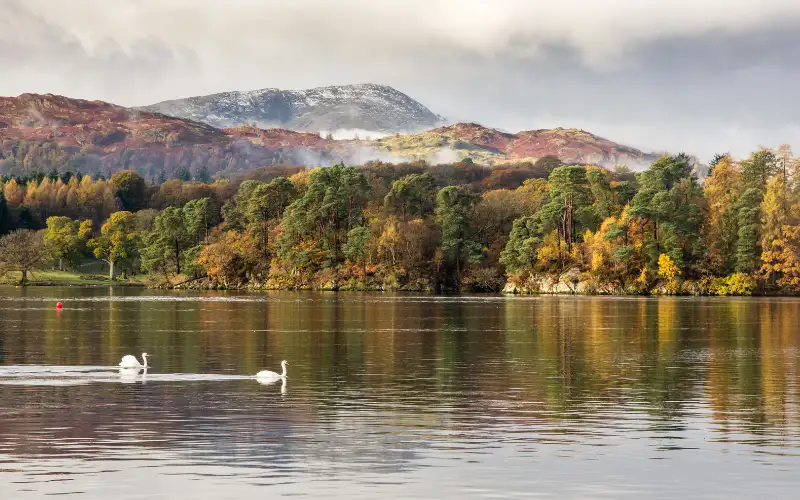
The Lake District
The Lake District in northwest England is a paradise for wild swimmers. Its namesake lakes, such as Windermere and Ullswater, provide idyllic settings for tranquil swims, especially in the summer and early autumn. The clear waters, framed by rolling hills and lush woodlands, invite you to unwind and connect with nature.
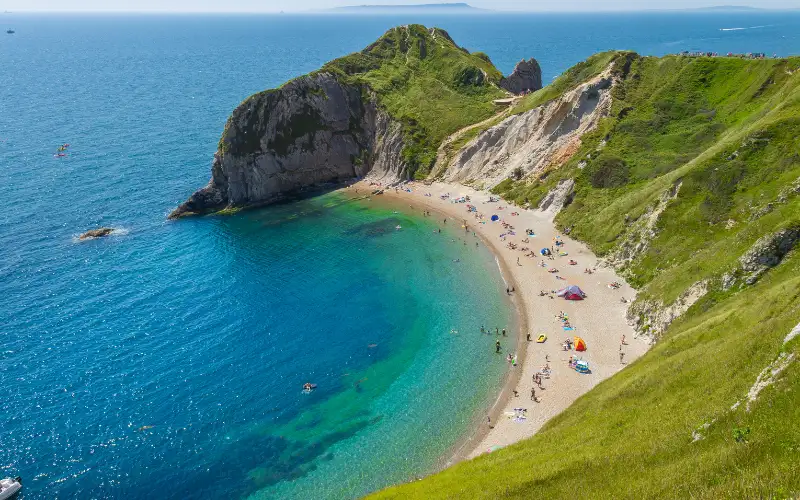
The Jurassic Coast
The Jurassic Coast in southern England offers a dramatic coastline dotted with secluded coves and stunning rock formations. Lulworth Cove and Durdle Door are iconic spots for coastal wild swims, especially during the summer. The calm waters and breathtaking geological wonders make it a fantastic destination for adventurers of all levels.
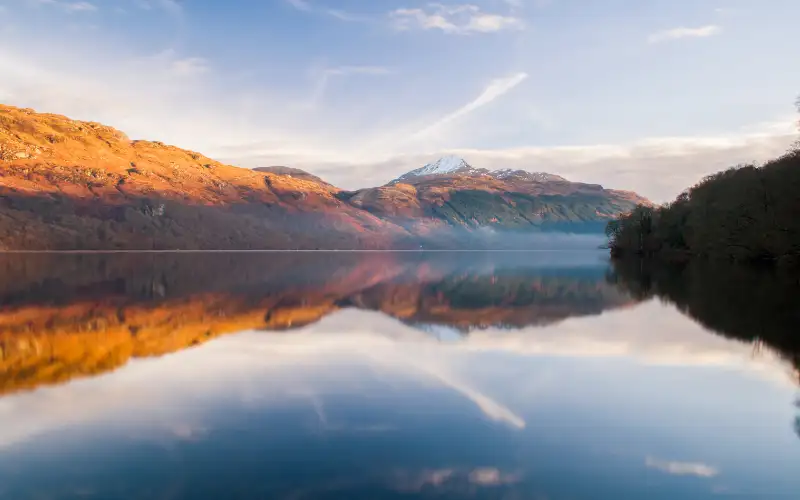
The Lochs of Scotland
Scotland’s lochs are renowned for their wild beauty and pristine waters. Loch Ness, Loch Lomond, and Loch Morlich each offer a unique wild swimming experience. Loch Ness, known for its legendary monster, is an excellent destination for early spring and autumn swims. Loch Lomond’s clear waters and forested surroundings are a springtime dream. Loch Morlich, nestled in the Cairngorms, beckons winter swimmers with its frosty embrace and snow-draped landscapes.
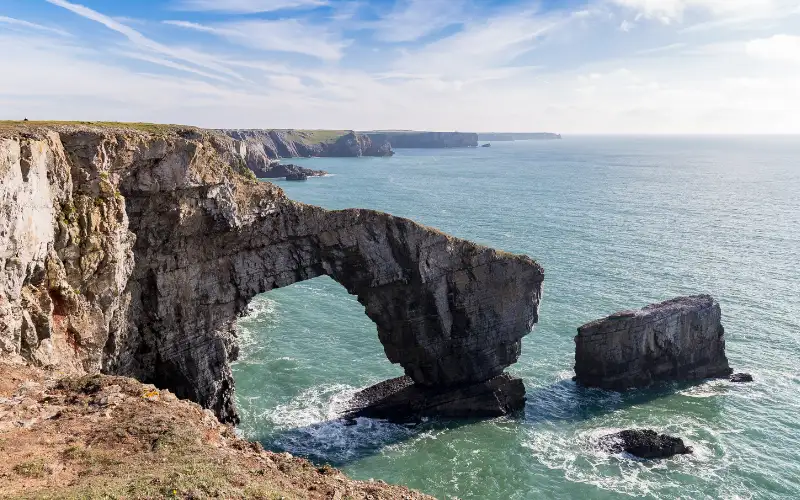
Pembrokeshire Coast
The Pembrokeshire Coast in Wales boasts an array of coastal gems for summer swims. Barafundle Bay, with its golden sands and turquoise waters, is an idyllic spot for families and beginners. For a more secluded experience, explore the hidden coves and rock pools that punctuate this stunning coastline.
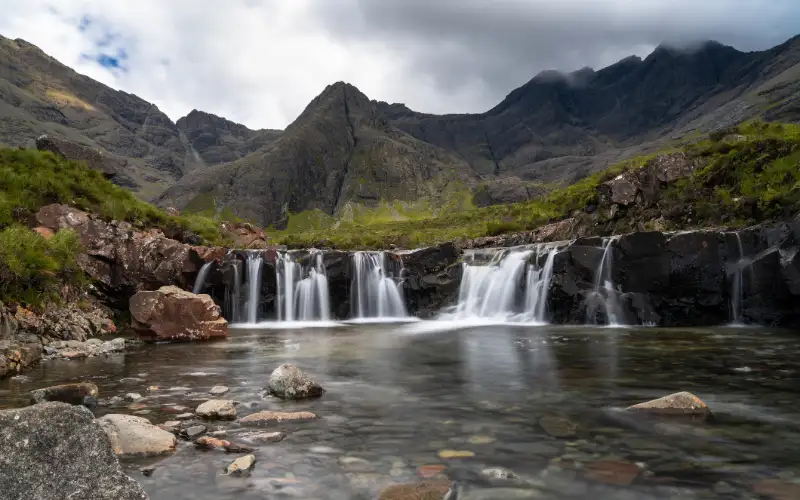
The Scottish Highlands
The Scottish Highlands offer wild swimmers a range of options throughout the year. Try the fairy-tale-like Fairy Pools on the Isle of Skye in late spring and early summer. The rugged beauty of the Allt Dearg Mor in Glen Etive calls for autumnal adventures. Meanwhile, the Cairngorms present a winter wonderland for the bravest of swimmers.
Before embarking on your wild swimming adventure, consider the unique features of each location and their suitability for different seasons. Research local regulations and safety guidelines, and always respect the environment. Whether you’re seeking the serenity of a remote loch or the thrill of coastal exploration, the UK’s wild swimming destinations have something to offer every aquatic adventurer.
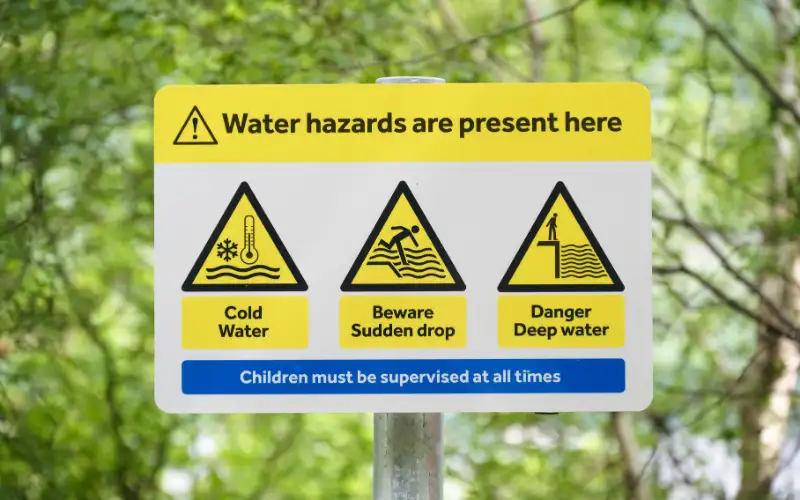
Preparation and Tips
As you embark on your wild swimming journey, proper preparation and safety considerations are paramount. Here are some practical tips and recommendations to ensure your wild swimming adventures are both enjoyable and safe.
Gear and Attire
- Wetsuit or Swimwear: Depending on the season and water temperature, choose appropriate attire. In colder months, a wetsuit provides insulation. For milder temperatures, consider a swim costume or trunks.
- Neoprene Accessories: Neoprene gloves, booties, and swim caps can help retain body heat, especially in colder waters.
- Tow Float: If you’re swimming in open water, a tow float can increase your visibility to boaters and offer extra buoyancy. Tow float dry bags also offer storage for valuables and essentials too.
Safety First
- Swim with a Buddy: Whenever possible, swim with a friend or fellow wild swimmer. It’s not only safer but also more enjoyable to share the experience.
- Weather Awareness: Check weather forecasts before your swim, especially in coastal and open water locations. Avoid swimming in adverse conditions, and be prepared for changes in weather.
- Tides and Currents: Understand tide times and currents in coastal areas. Strong currents can pose risks, so plan your swims accordingly.
- Emergency Plan: Inform someone of your swim plans and estimated return time. Carry a fully charged mobile phone in a waterproof case for emergencies.
Open Water and Cold Water Considerations
- Open Water Safety: If you’re venturing into open water, familiarise yourself with navigation and safety techniques for open water swimming. Be aware of boat traffic and follow local regulations.
- Cold Water Acclimatisation: Cold water swimming should be approached gradually. Start with shorter swims in cool waters and gradually increase your time and distance as your body becomes accustomed to the temperature.
- Cold Water Shock: When entering cold water, take it slowly. It’s normal to experience a gasp reflex and hyperventilation. Allow your body to adjust before starting your swim.
Seasonal Acclimatisation
- Spring and Autumn: Begin with shorter swims and gradually extend your time in the water as the season progresses. Wear a wetsuit or neoprene swim cap for added insulation.
- Summer: Embrace the warmer waters and experiment with longer swims. Focus on staying hydrated and protecting your skin from the sun.
- Winter: Only experienced swimmers should attempt winter swims. Ensure you’re adequately insulated with a high-quality wetsuit, gloves, and booties. Always have a warm change of clothes and a hot drink waiting for you after your swim.
Wild swimming offers a unique connection with nature, but safety should never be compromised. By adhering to these practical tips and recommendations, you can make the most of your wild swimming adventures while staying safe and comfortable in the water.
Ready To Start Wild Swimming?
Now, you’re ready to dive into the world of wild swimming, to feel the rush of open waters and the cool embrace of nature’s pools. Whether you seek tranquility, adventure, or a connection with the elements, wild swimming offers a universe of possibilities, limited only by the boundaries of your own exploration.
Additional Resources
- Cold Water Swimming Gear – Our Ultimate Guide – All the gear you might need for wild swimming recommended for you.
- Wild Swimming UK: A comprehensive website with information on wild swimming locations, safety, and a community forum.
- Outdoor Swimming Society: An organisation dedicated to promoting outdoor swimming in the UK, with valuable resources and event listings.
- Wild Swimming: 300 Hidden Dips in the Rivers, Lakes and Waterfalls of Britain: A book by Daniel Start that provides insights into hidden wild swimming spots across the UK.
With these resources and the knowledge gained from our year-round guide to wild swimming, you’re equipped to embark on a journey that will redefine your relationship with water, nature, and yourself. Dive in and embrace the wild beauty that awaits you.
